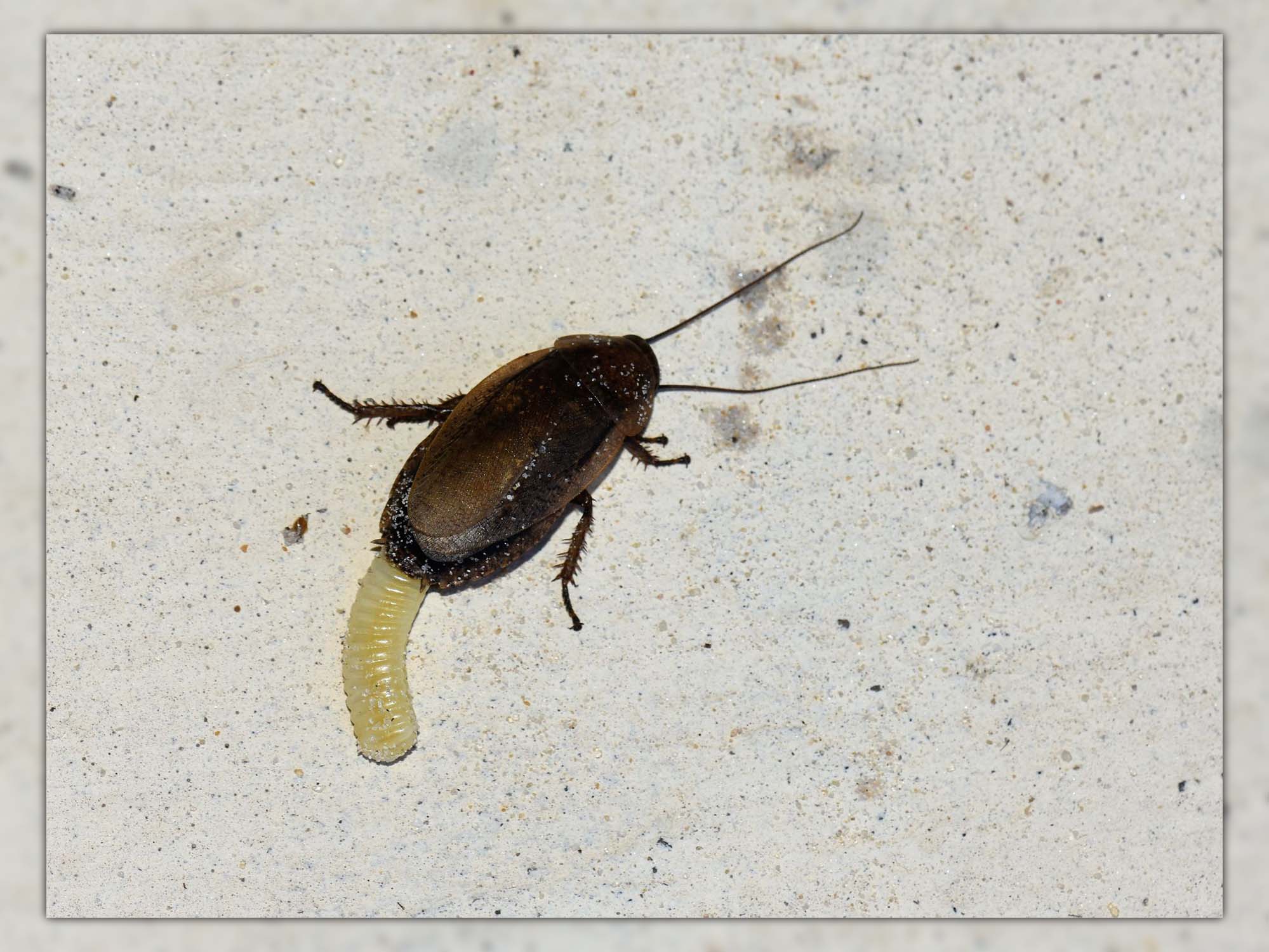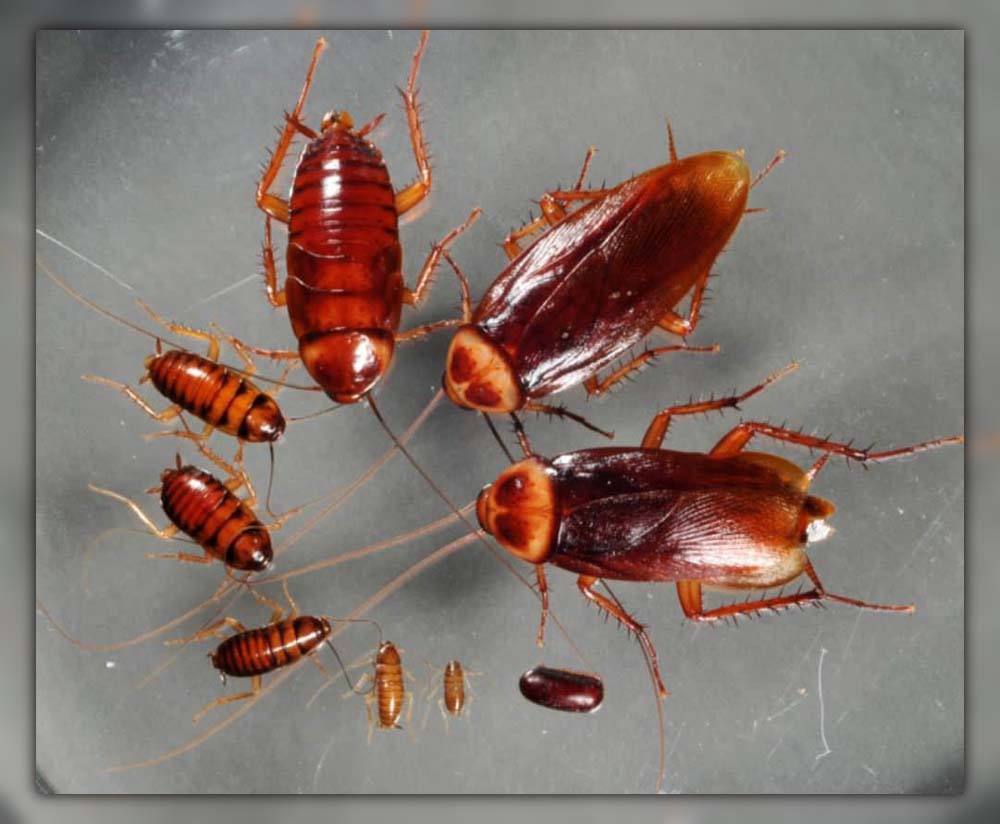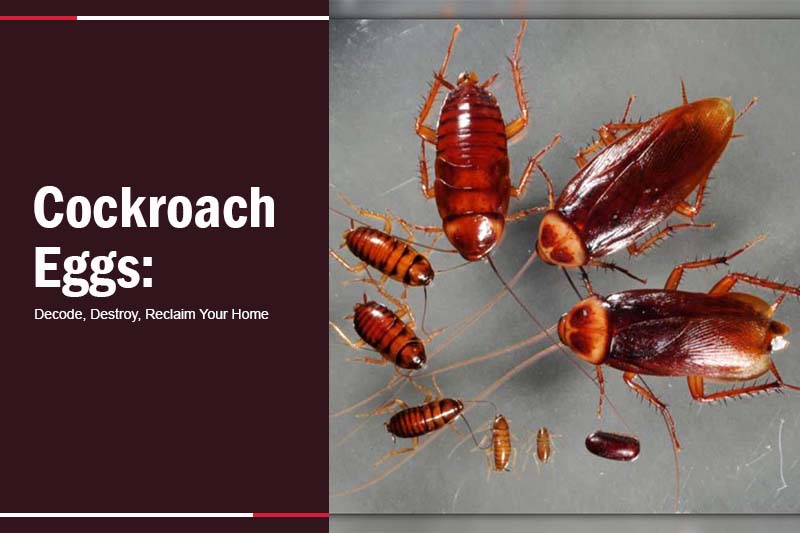Ever questioned what kills Cockroach eggs or how to get rid of roach eggs?
In this comprehensive guide, we’re diving deep into the secrets of these egg-laying pests.
What Do Cockroach Eggs Look Like?
Identifying roach eggs is essential for effective pest management. Cockroach egg cases, also known as oothecae, have distinct characteristics that set them apart from other debris. Knowing what to look for can help you detect and address potential infestations. Here’s a closer look at what roach with egg sack and cockroach eggs look like:
Cockroach egg cases are typically pill-shaped and measure about 5–10 millimeters in length. Their size may vary slightly based on the roach species.
The color of the egg cases can range from dark brown to tan, and some may even have a reddish hue. This color variation often depends on the species of cockroach.
The egg cases have a hard, leathery exterior that provides protection for the eggs inside. One distinctive feature is a ridge that runs along one side of the egg case, particularly noticeable in American cockroach egg cases.
Cockroaches are experts at finding hiding spots for their eggs. They often lay eggs in dark, hidden areas, such as corners of cupboards, beneath piles of materials, and inside walls. Female cockroaches use their saliva to glue the eggs to crevices, making them difficult to remove.
>> Read more: Can roaches get in Mattresses? How to Simple eliminate.

How Many Roaches Are in One Egg?
The number of roaches that hatch from a single egg case depends on the cockroach species. Different species have varying reproductive capabilities, leading to different numbers of offspring.
An average American cockroach egg case can yield around 12 baby roaches upon hatching.
German cockroach egg cases can contain a significantly higher number of offspring, with cases often holding up to 48 baby roaches.
Cockroaches reproduce quickly. An American cockroach female can lay more than 60 egg cases in a year. In some cases, a single female cockroach can produce as many as 800 roach hatchlings within a year.
How to kill cockroach eggs at home?
Squish the eggs
Squishing the eggs can be a satisfying experience, especially if you have been trying very hard to eliminate them via other methods. This roach egg-killing solution is not only simple but also quite productive.
Implementing the method requires a bulky pair of boots or shoes. Once you have worn your boots, stamp on the eggs until they are destroyed. Alternatively, crush the egg sacs using a heavy object or tool such as a stone or hammer.
>> Read more: Squish cockroach: Myth vs. Fact!
Spray the eggs
Raid can kill roach eggs after they are crushed. The chemicals in Raid insect spray will ensure that the egg contents are not hatched whatsoever. Because crushing eggs will create a mess, carry out the activity outside the house, following it up with a clean-up.
Some people opt for burning the eggs after collecting them. However, burning roach eggs should be far away from your home so that you do not burn anything else by accident.
Another benefit is that you will inhale less odor from the burning of cockroach eggs since air circulation is sufficient outside. however, it is best to crush them open and use insecticides like Raid or Demon Max to kill roach egg contents.
Boric acid bathing
Boric acid is a powerful chemical solution many homeowners have used for years to kill eggs, larvae, and roaches. Its application demands that you put the roach eggs in a container resistant to acid damage. Then, pour the boric acid on the egg sacs to kill them.
For the approach to be satisfactory, the boric acid should be enough to drown the egg sacs of roaches.
Insect growth regulators
The special liquids are usually used to control and prevent pest infestations, including the ones for cockroaches. Insect growth regulators can make adult cockroaches infertile and thus limit the spread of an infestation.
The chemical can also block the normal development of roaches’ eggs, eventually leading to their death.
Baking soda and sugar
Mix equal amounts of sugar and baking soda in a bottle or a container. The sugar charms these pesky insects, and the baking soda kills them and the eggs laid. Apply the mixture you have made where you notice cockroach eggs, such as under sinks, around pipes, and in cabinets.
Besides the methods mentioned above, learning how to use a roach bomb is also something you should consider.

What Kills Roaches and Their Eggs Naturally?
Diatomaceous Earth stands out as a potent natural remedy for eliminating roaches. When strategically applied, this fine powder can be an effective tool in your battle against these pests.
While diatomaceous earth can eliminate adult roaches, it doesn’t directly affect cockroach eggs. Roach egg sacs are resilient and not harmed by natural remedies or even pesticides until they hatch.
How to kill cockroach eggs, you wonder? Insect Growth Regulators (IGRs) are substances that interfere with the roaches’ development and reproduction. They can make adult roaches infertile and hinder the normal growth of their eggs.
Conclusion
In the battle against cockroach eggs, knowledge truly is power. By understanding their appearance, behavior, and the natural remedies that work best, you’ve equipped yourself with the tools to tackle these persistent pests head-on.
If you found this guide helpful in your pursuit of a roach-free home, you’ll be thrilled to know that Pestweek has a treasure trove of informative blogs to offer.

Calina Mabel has over 15 years of experience in the field of journalism and communications. Currently, Calina Mabel is the Content Writer for categories such as Cockroach, Ants, Bed Bugs, Mosquito, Rodent, Termite, and Flies on Pestweek.com. She aims to build content for these categories with a focus on providing valuable and accessible information to readers, in order to create the world’s largest knowledge community about Pests.
All content written by Calina Mabel has been reviewed by Emily Carter.


